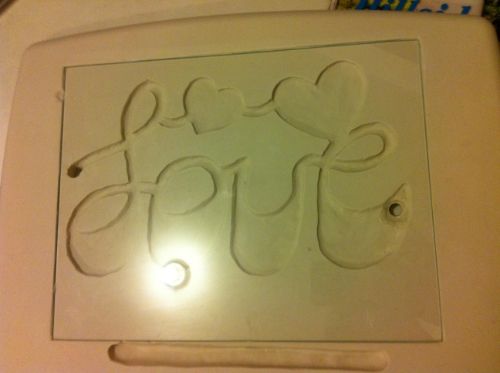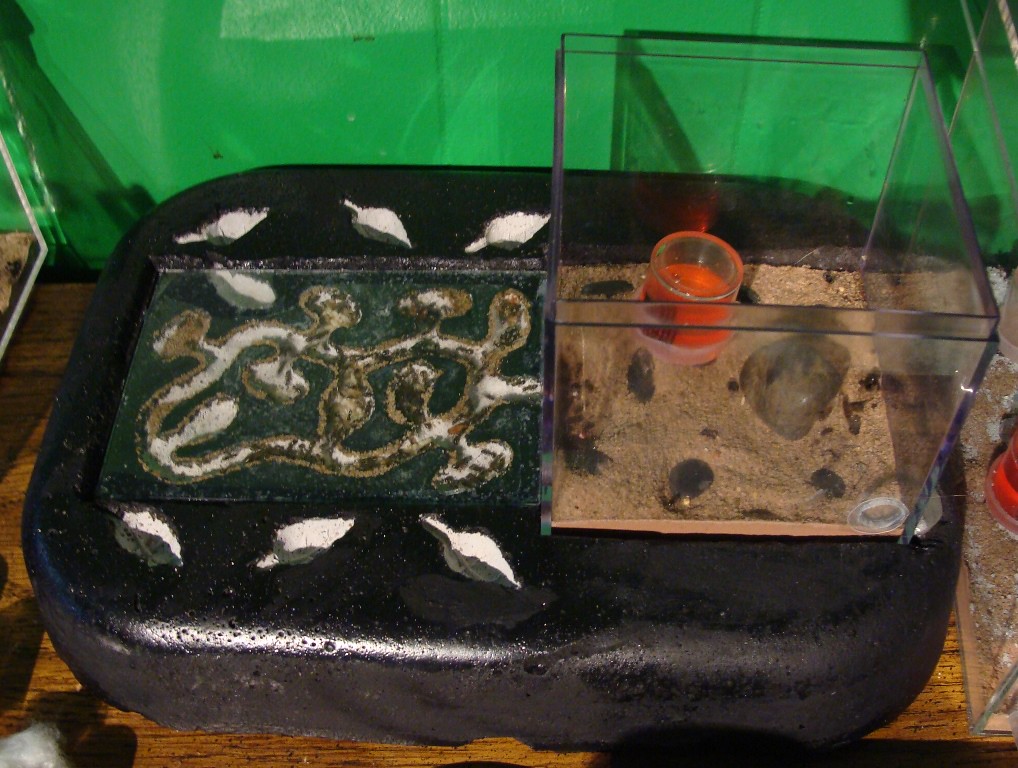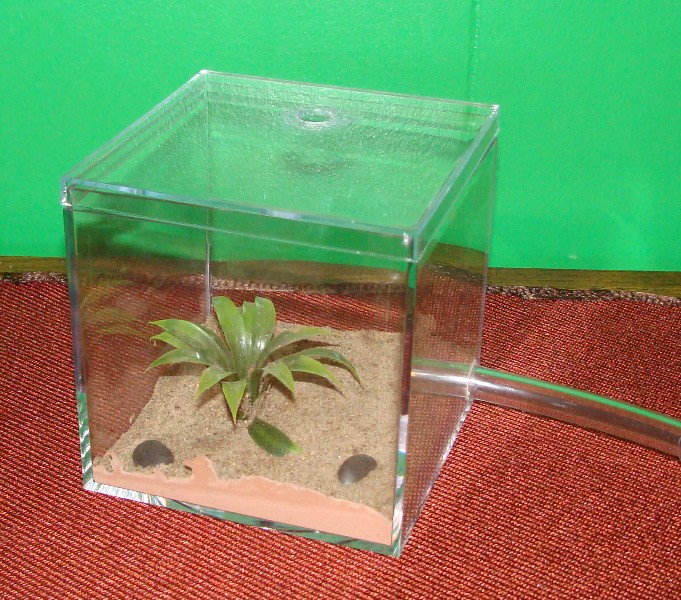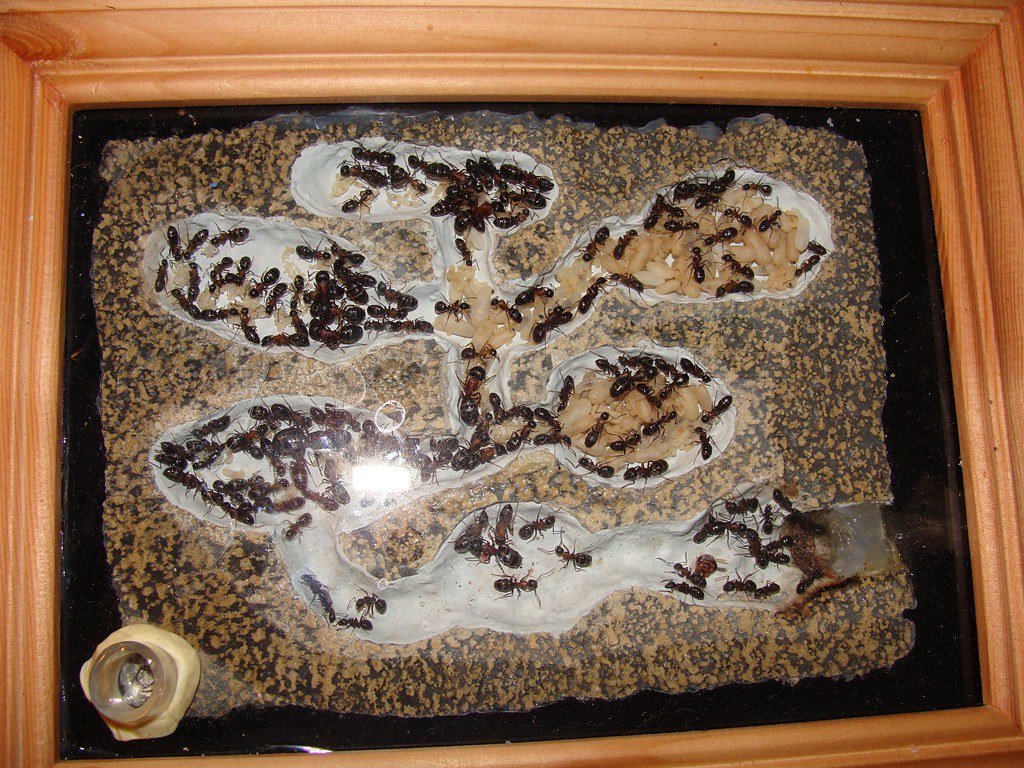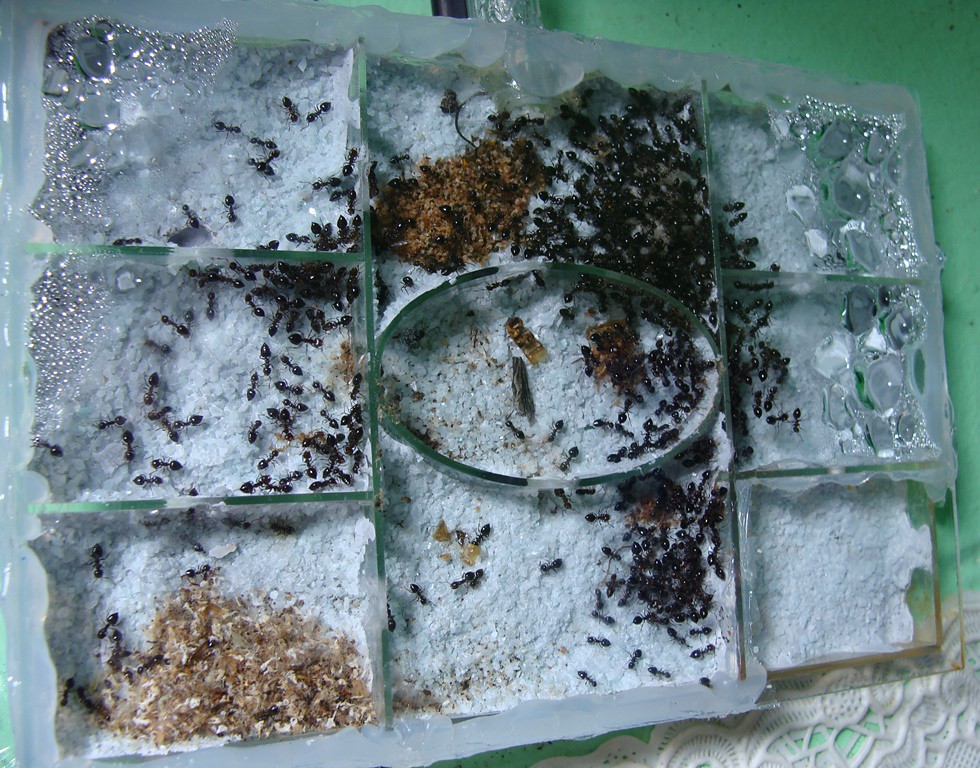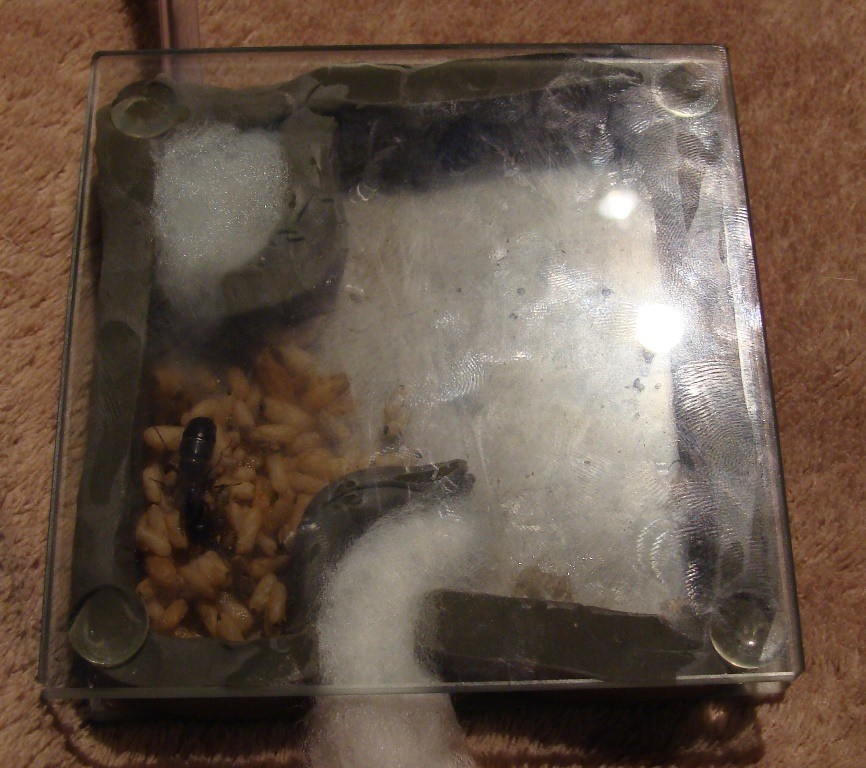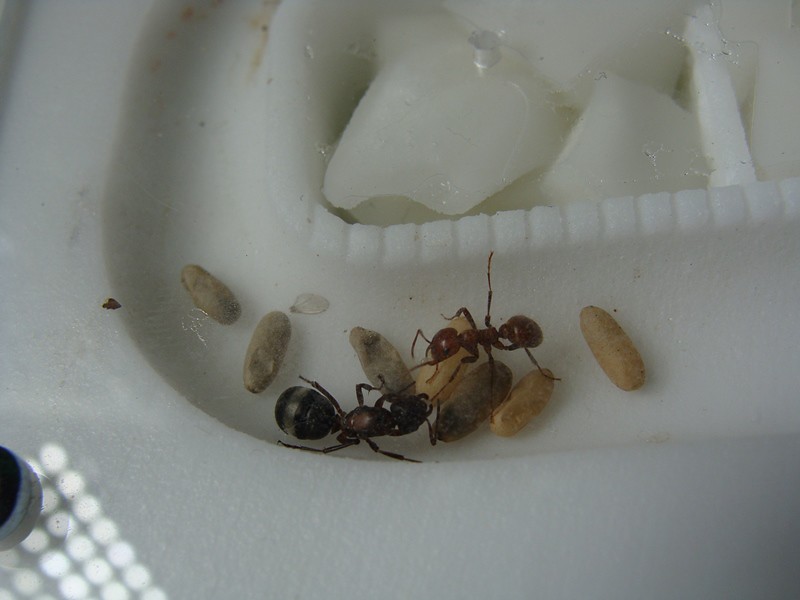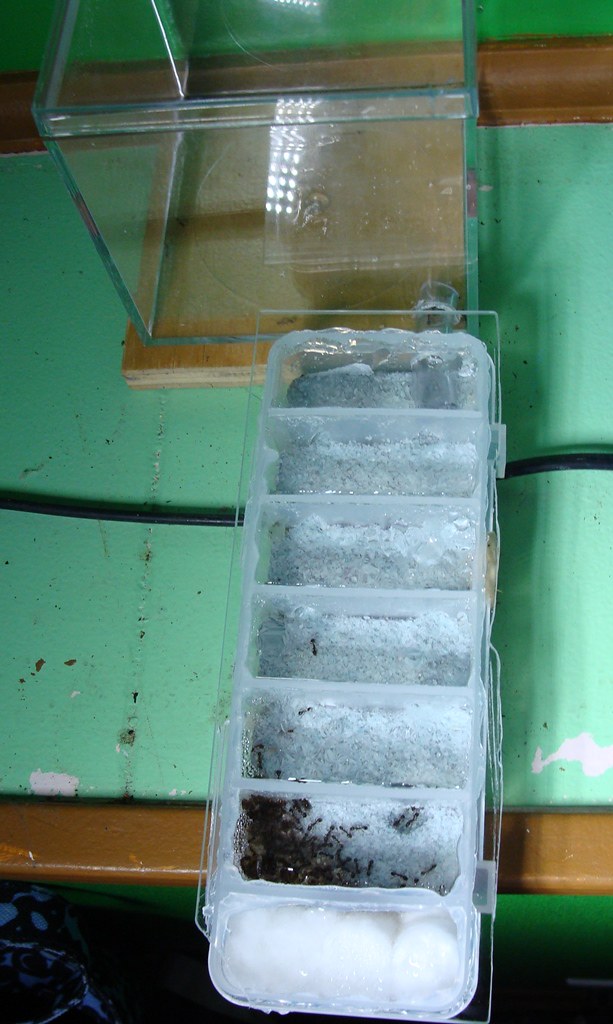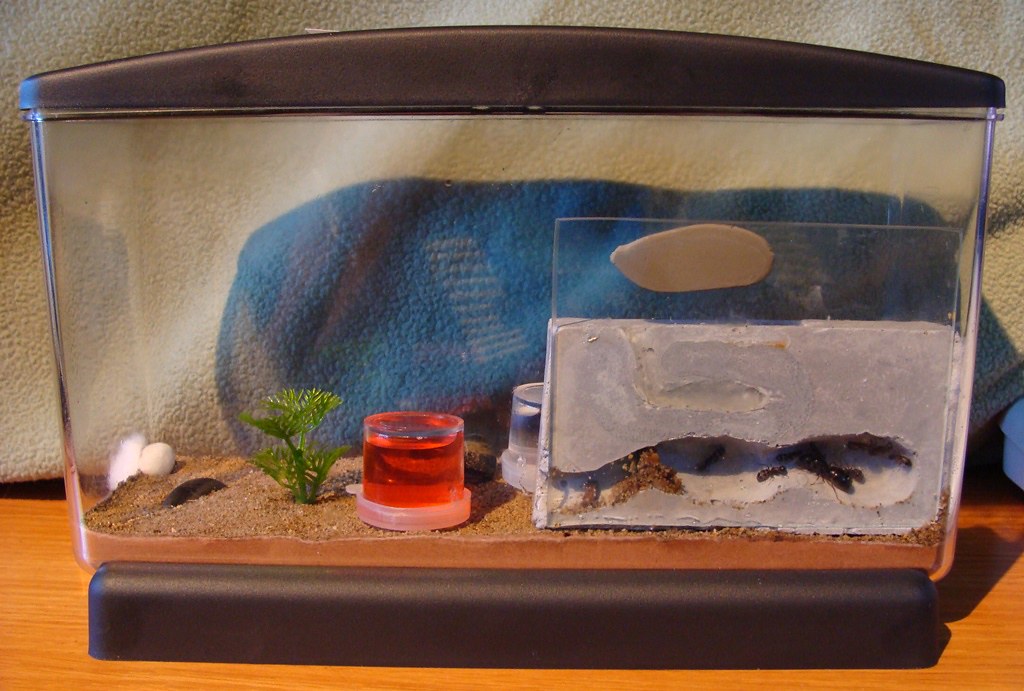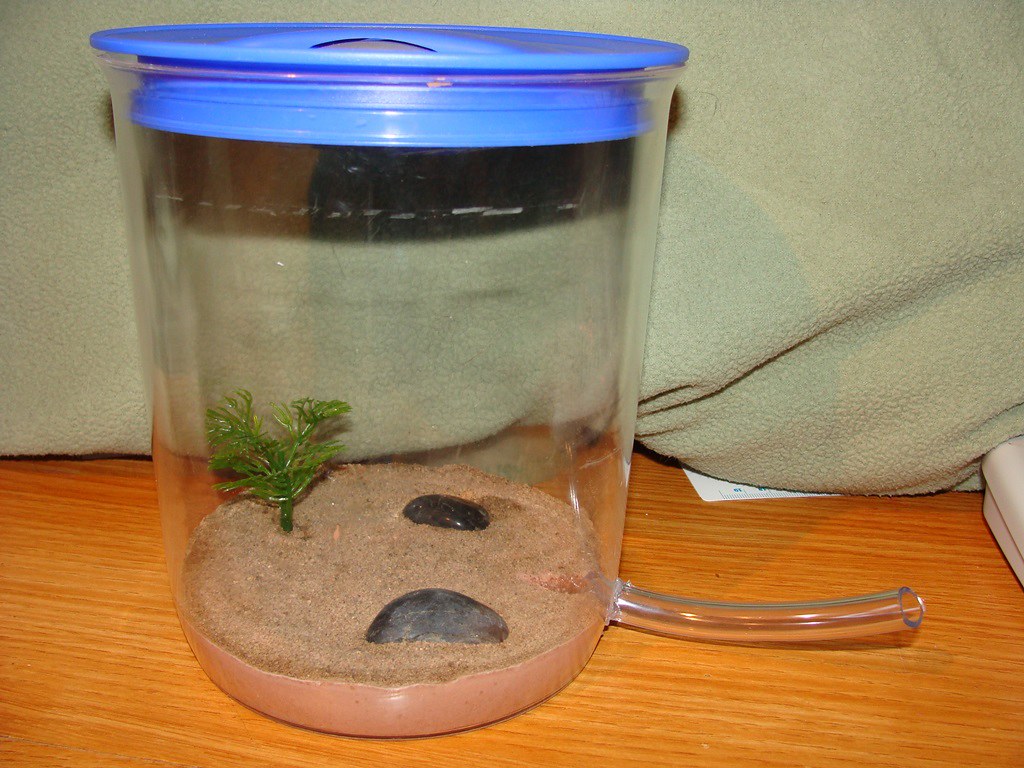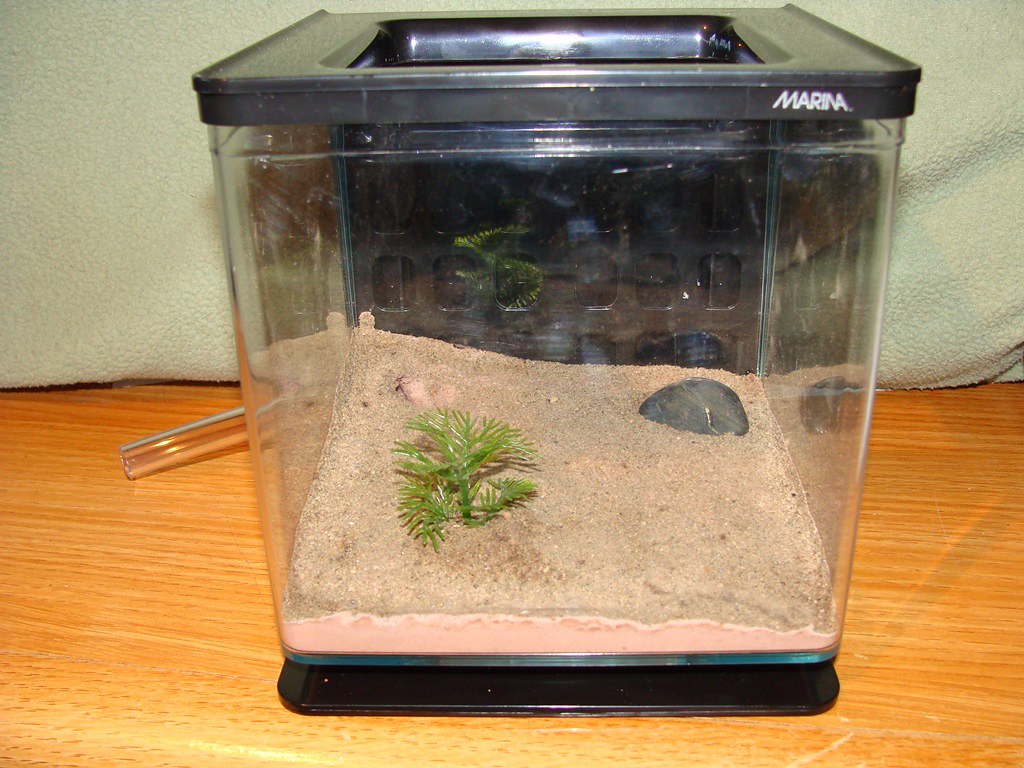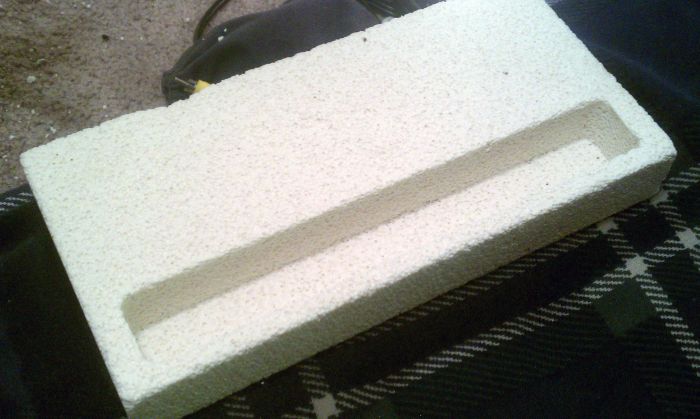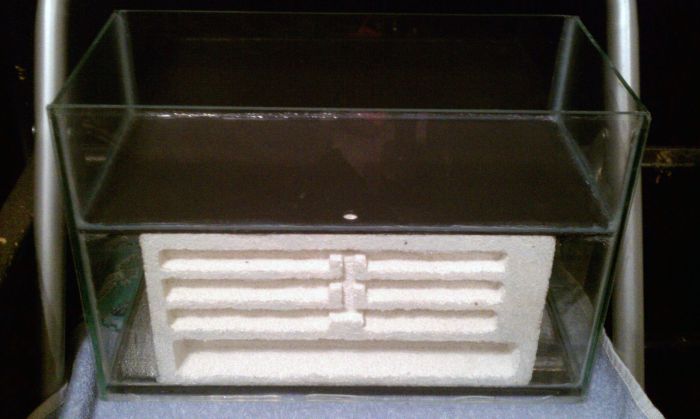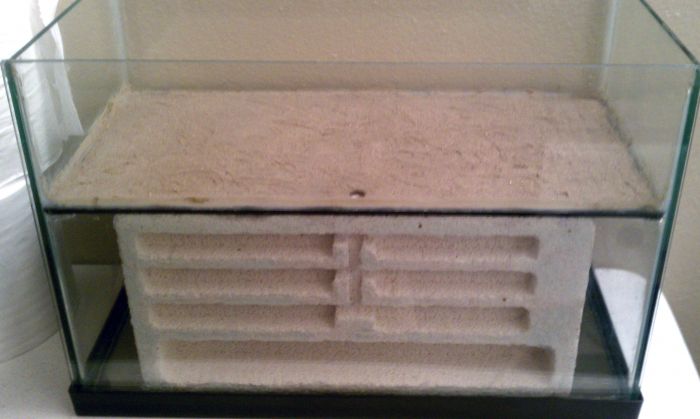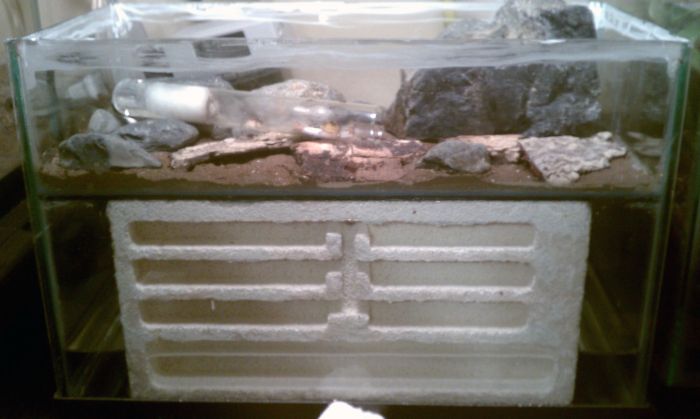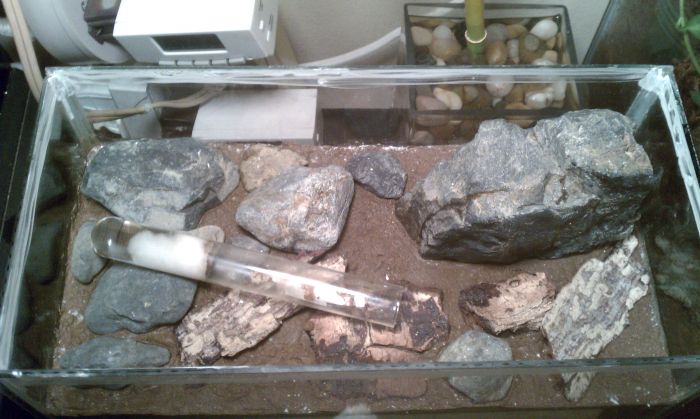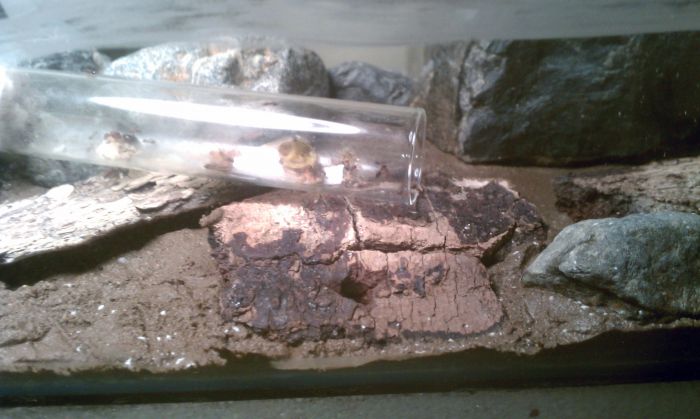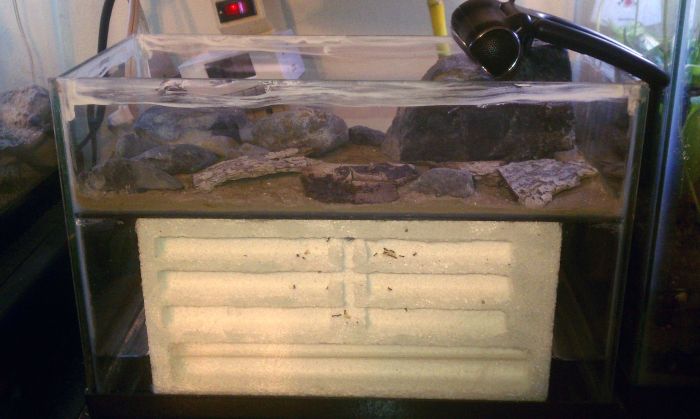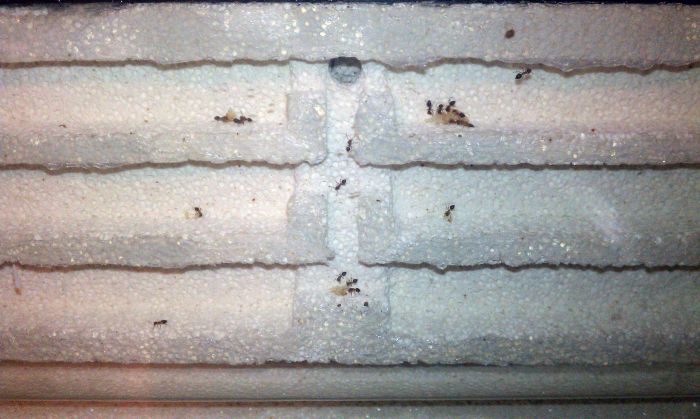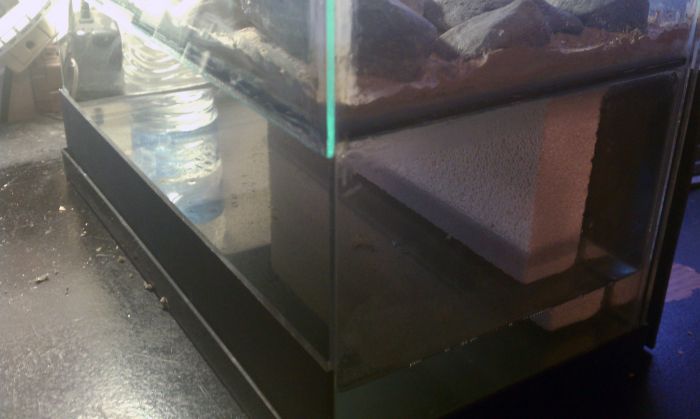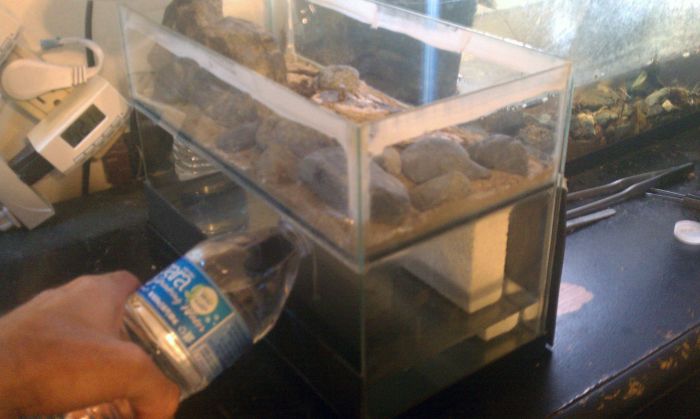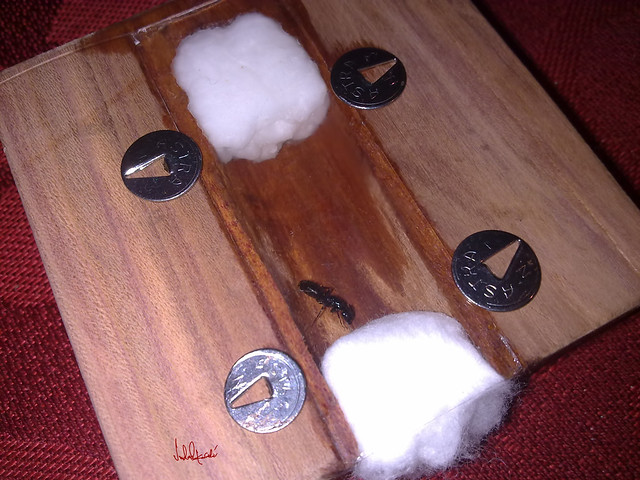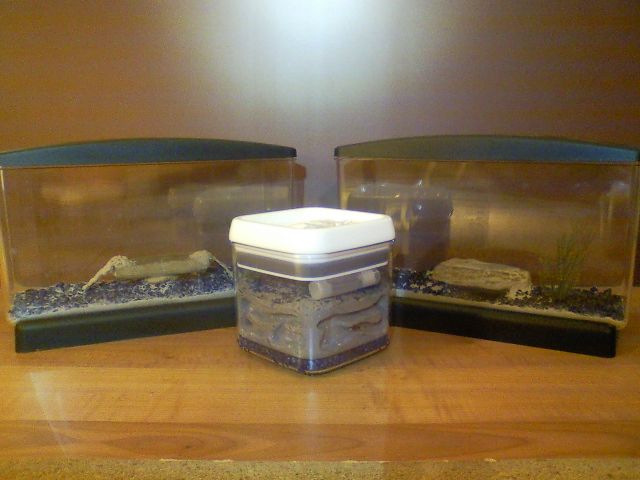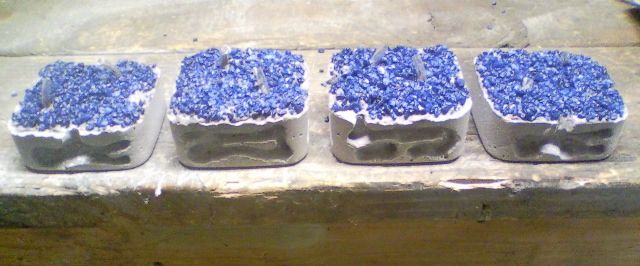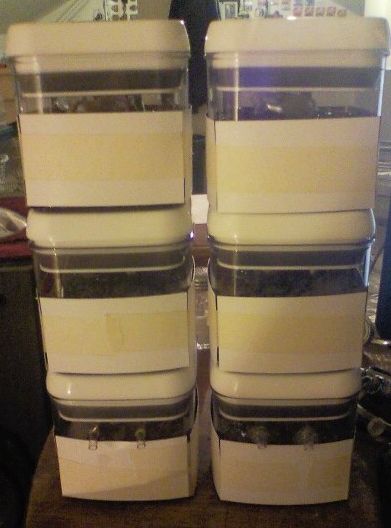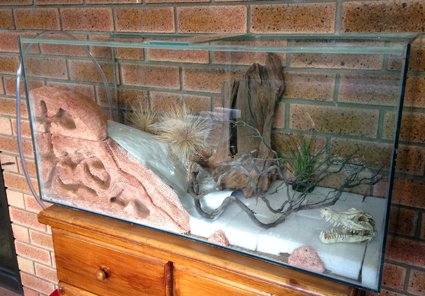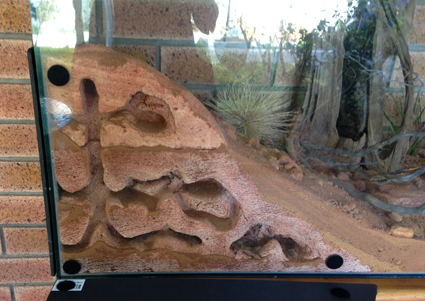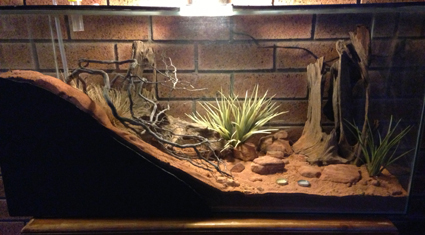Plaster formicariums are great beginner formicariums because they are easy and cheap to build. They do however have their downsides; one being that they are quite prone to molding. With that being said I will still show you how to make one. =)

(Modeling clay/Plasticine, Plaster of Paris, Flat-bottomed basin, Tubing, Glass Sheet [from a photo frame])
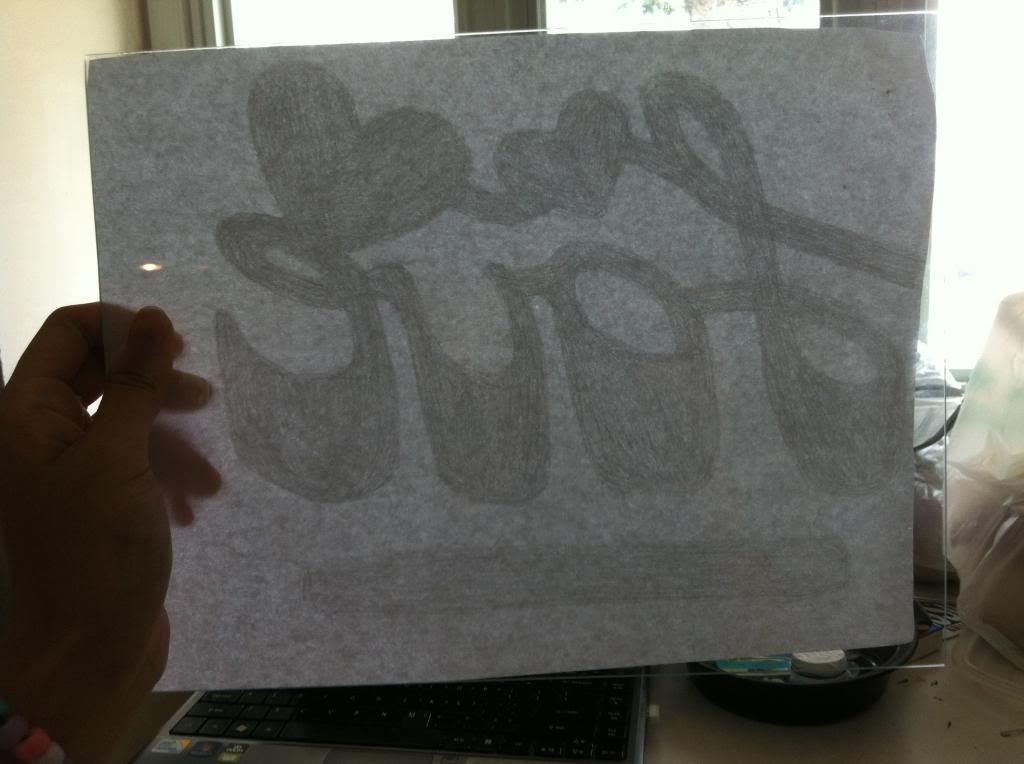
If you have a design, invert it so that the design will come out the correct way after molding.
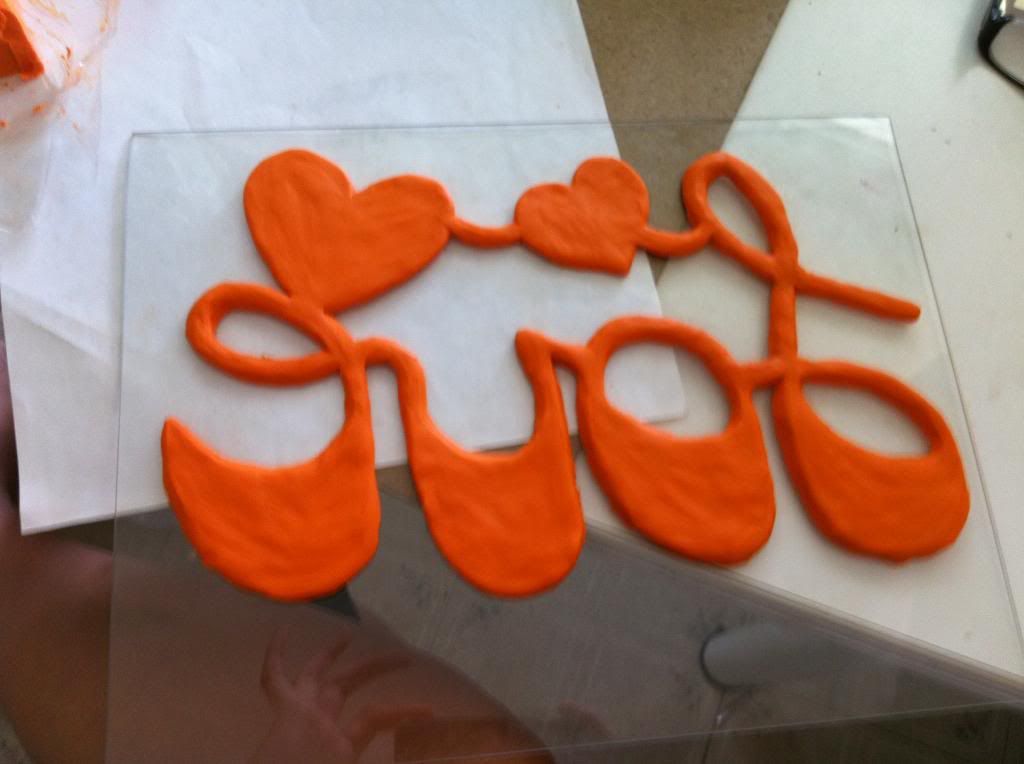
Mold your plasticine against the glass. Make sure you adjust the size of the tunnels and chambers based on your ants' needs. Smooth the plasticine out as much as possible to create fewer imperfections during the molding process.
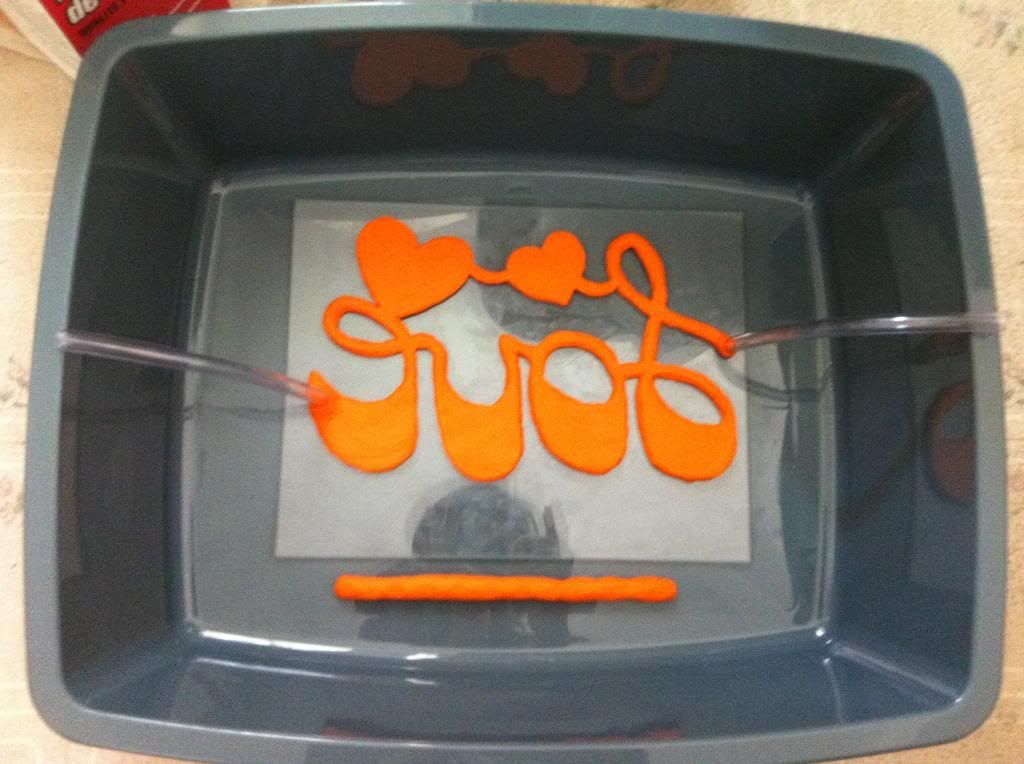
Put the glass into the basin with the plasticine facing up. Remember to include your piping (if necessary, you can always drill for your piping later but putting it immediately ensures perfect fit for your piping. Also, remember to include a place to hydrate your formicarium with. It may not be necessary because you can always spray the back of the formicarium with water but I did it just in case. Fill the basin up with plaster. It is best to fill 1/4, then tap it a little to make the bubbles settle, then continue filling in 1/4 until desired thickness. If you have, I would suggest using plaster gauze to strengthen the structure but I didn't because I'm cheap and I forgot to get it. Leave for 24 hours to dry.
First time doing this, I am concerned by the overall structural stability since it is a little on the thin side, but only time will tell.
